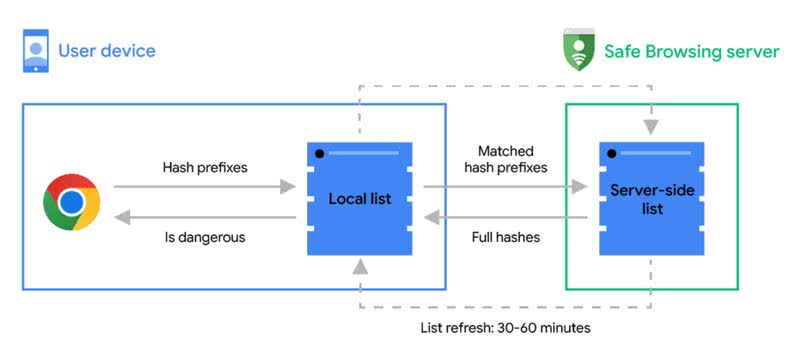Google Chrome Boosts Real-Time Protection
Google has enhanced real-time protection from unsafe websites in Chrome without infringing on user privacy. The revolutionary safety feature is available in Chrome’s standard Safe Browsing mode.
Addressing Previous Limitations
Prior to this update, Chrome’s harmful site detection operated by comparing visited resources with a locally stored list of dangerous internet addresses. However, this list was only updated every 30-60 minutes, an inadequate response time given that many phishing sites emerge and vanish much quicker. Hence, this method could not guarantee full protection.
The Improved Safety Mode
The enhanced Safe Browsing feature uses Google Safe Browsing servers for list comparison, making its response to threats much faster. Despite its efficiency, this method demanded that a plethora of confidential data is sent to Google, which wasn’t ideal for privacy, and therefore was not the default setting.

Ensuring User Privacy
The updated version of Safe Browsing resolves the privacy issue through a special API that hides site addresses from Google. According to Google, the updated mode works in real-time, checking sites not present in its database, converting addresses into 32-byte hashes, reducing them to four-byte hash prefixes, encrypting them, and sending them to Fastly’s independent privacy protection servers, whose servers anonymize the data. Thereafter, the hashes are sent via a TLS connection to Google Safe Browsing servers. Here, the entire URL hash (but not the URL) is matched against their hash list. Only the encrypted hash is sent to Google if a match is found, with the browser warning the user of possible danger.

Efficiency and Utility Advantages
Google assures that this method safeguards user privacy, as no one can see the user’s IP address or URL hash prefixes. The revamped “Safe Browsing” is projected to be 25% more effective at blocking phishing attempts. Google highlights the enhanced protection mode’s features, such as AI-powered attack detection, deep file scanning, and additional browser extension checks.
Availability
The updated “Safe Search” is now accessible in the desktop version of Chrome and iOS Chrome, with Android availability expected by the end of March.





